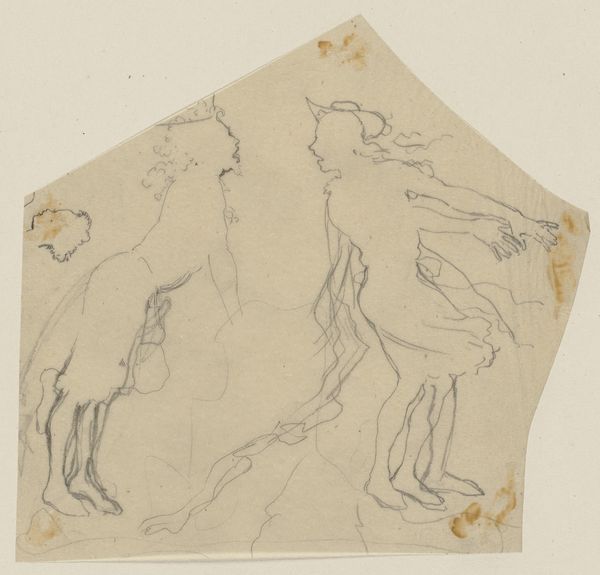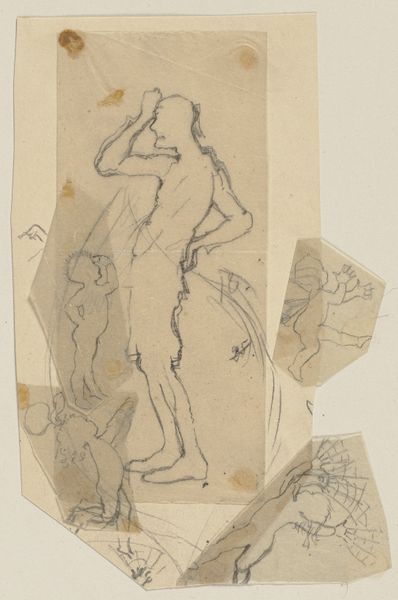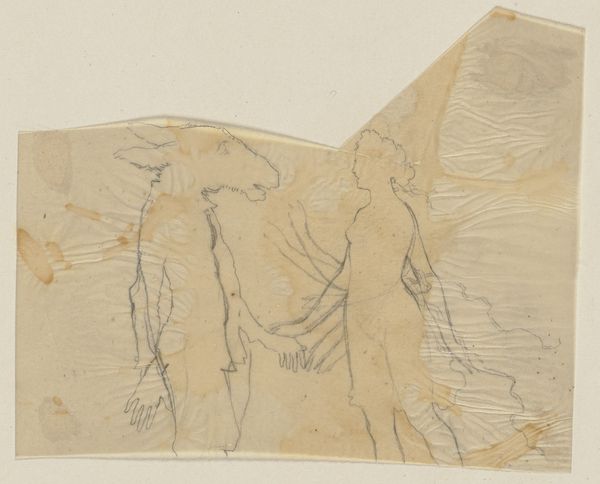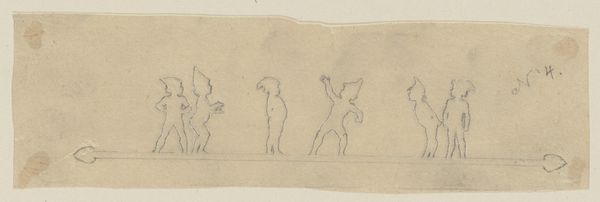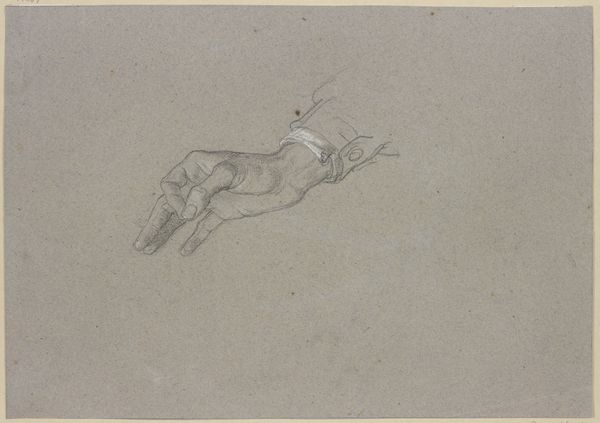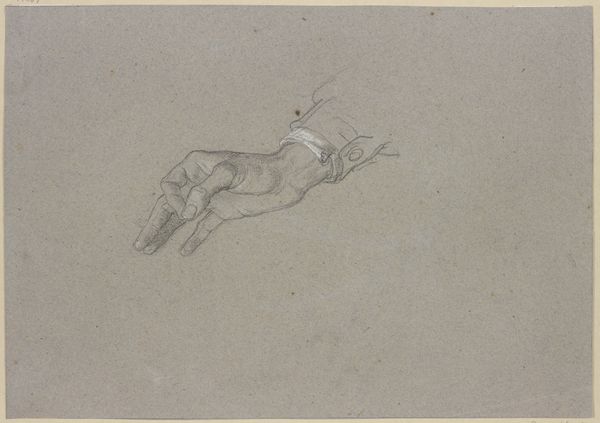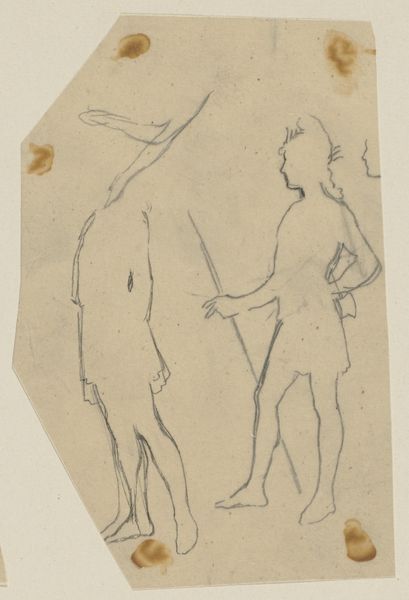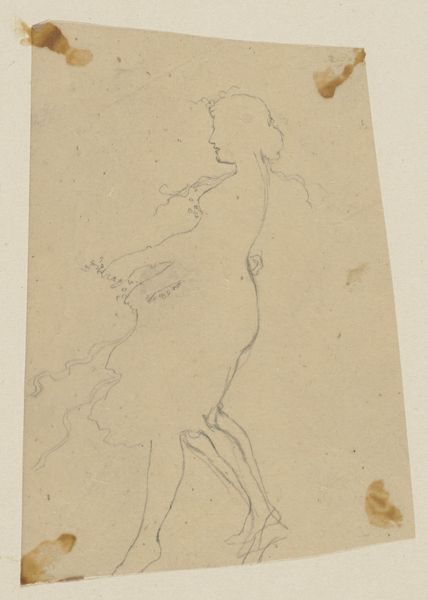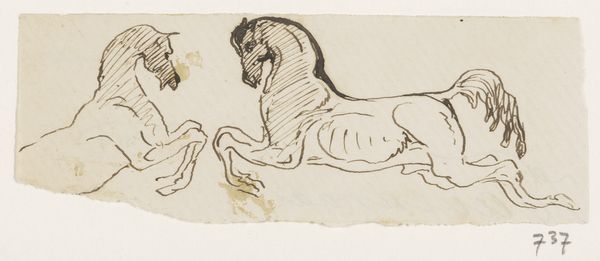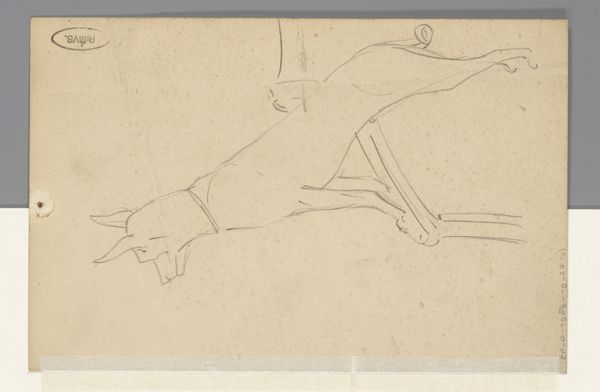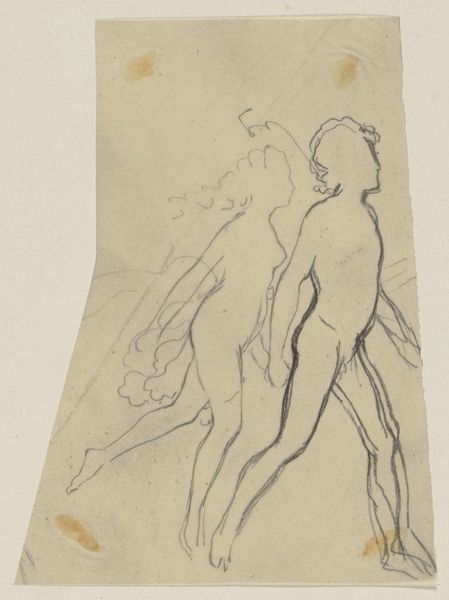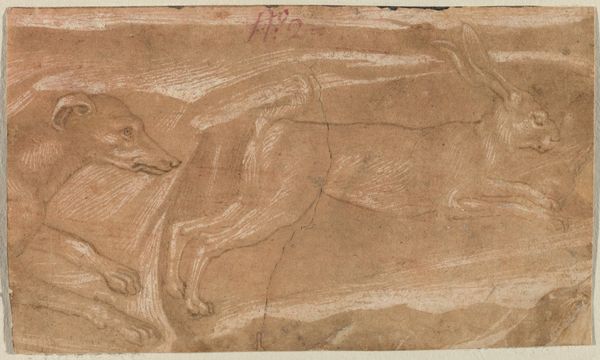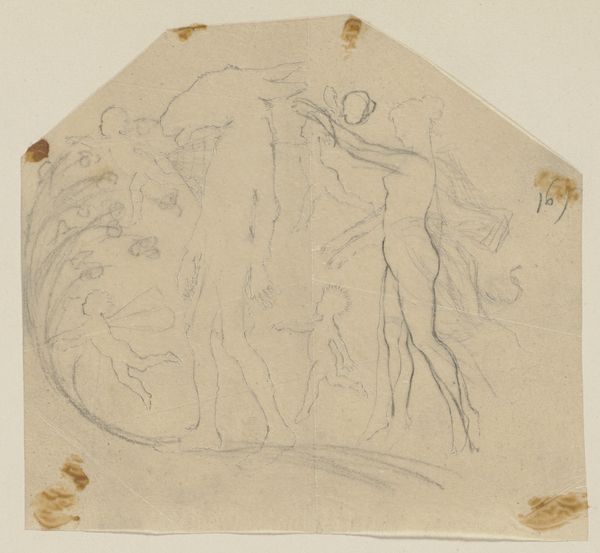
drawing, paper, pencil
#
portrait
#
drawing
#
16_19th-century
#
figuration
#
paper
#
german
#
pencil
#
line
Copyright: Public Domain
Curator: This spirited sketch before us, rendered in pencil on paper around 1867-1868, captures Paul Konewka's "Francis Flute as Thisbe, running, to the right." Editor: My immediate reaction is that it’s full of dynamic energy, even though it’s a preliminary drawing. There is a sense of urgent, theatrical flight; I can almost hear the exaggerated cries of Thisbe. Curator: Konewka, a German artist, was deeply engaged with literary and theatrical subjects. This drawing, housed here at the Städel Museum, relates to Shakespeare's "A Midsummer Night's Dream" and the play within a play, where Francis Flute awkwardly portrays Thisbe. We should reflect on the construction of gender and performance embodied in this character. How the comedic layers serve to highlight the fluidity of identity and challenge the era’s rigid norms. Editor: Absolutely. I see this in dialogue with other stage depictions of Shakespeare, especially considering how the late 19th century saw a resurgence of interest in the Bard, filtered through nationalistic and increasingly commercial lenses. The institutions propping these representations, who gets cast, where it is staged, these are key when interpreting not only the drawing but what the work embodies beyond its materiality. It brings an inherently queer element, especially with this frenetic line work that, I believe, really gives Flute/Thisbe so much vivacity. Curator: Precisely. There is a push and pull between comedy and caricature which underscores the inherent tensions within gendered expectations of stage portrayal at that time, revealing how those boundaries were actively being explored and often undermined. Editor: Considering Konewka’s broader body of work, what statement can we draw about his sociopolitical leaning? Given that the play centers on class difference? Or could it also be about the burlesque within bourgeois leisure pursuits, an indirect commentary? Curator: Yes, absolutely, it reflects the changing landscape of social interactions, with emergent roles that are being tested not only in art but also across society. This little sketch manages to encapsulate that whole dynamic moment! Editor: Agreed. Viewing Konewka's hurried lines now, knowing its place within the historical trajectory of art and performance, highlights aspects beyond a mere illustration of a comical stage moment.
Comments
No comments
Be the first to comment and join the conversation on the ultimate creative platform.
